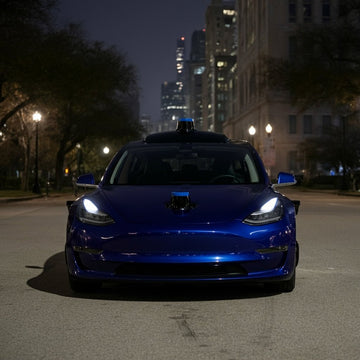Texas Lawmakers Demand Tesla Robotaxi Pause: Here’s Why It Won’t Work
In a bold move reflecting the growing concerns around autonomous vehicle technology, Texas lawmakers have recently called for a pause on Tesla's robotaxi initiative. This demand raises questions about the intersection of innovation, regulation, and public safety in the rapidly evolving landscape of transportation technology.
The Push for a Pause
On [insert date], Texas legislators voiced their concerns regarding the deployment of Tesla's robotaxi service, citing potential risks associated with autonomous vehicles. The lawmakers argue that more stringent regulations are necessary to ensure the safety of passengers and pedestrians alike.
"We need to prioritize public safety over rapid technological advancement," stated Texas State Senator [insert name], highlighting the anxiety surrounding the integration of AI into everyday transportation. This sentiment reverberates through various communities, especially as autonomous vehicle-related incidents have garnered significant media attention.
The Context of the Debate
As Tesla pushes the boundaries of what is possible with self-driving technology, the demand for a pause underscores a broader national conversation about the regulation of autonomous vehicles. According to a recent survey conducted by [insert credible source], 67% of Americans express concerns about the safety of self-driving cars, a statistic that cannot be ignored by policymakers.
Proponents of Tesla's robotaxi service argue that the technology promises to reduce traffic accidents, which are predominantly caused by human error. In fact, the National Highway Traffic Safety Administration (NHTSA) reports that over 90% of traffic accidents are the result of human mistakes.
Challenges to the Pause
However, despite the lawmakers' demands, there are several reasons why halting Tesla’s robotaxi initiative may not be feasible.
- Technological Momentum: Tesla has already invested billions in the development and deployment of its autonomous driving technology. A pause could stall innovation and hinder competitive advantages against other automakers who are also racing to deploy similar technologies.
- Consumer Demand: Many consumers are eager to embrace the convenience and efficiency that come with autonomous driving solutions. A survey by [insert credible source] found that 72% of respondents are excited about the prospect of using robotaxis.
- Legal and Economic Implications: A pause could result in significant legal challenges, as companies are likely to argue that such a halt violates their rights to conduct business. Economically, the robotaxi market is projected to be worth tens of billions in the coming years.
Public Safety Concerns
While the push for a pause reflects legitimate public safety concerns, Tesla and other autonomous vehicle manufacturers maintain that safety is their top priority. Tesla’s vehicles are equipped with advanced safety features and undergo rigorous testing protocols before any public deployment.
Additionally, the company has reported that its Full Self-Driving (FSD) Beta software has driven over [insert statistics] miles with a significantly lower accident rate compared to traditional vehicles.
What Needs to Happen Next
Instead of a complete halt, experts suggest a collaborative approach between lawmakers and automotive manufacturers. This could involve the establishment of a regulatory framework that ensures safety without stifling innovation.
Furthermore, enhanced public education initiatives about the capabilities and limitations of autonomous vehicles could help alleviate consumer fears and build trust in this emerging technology.
Key Takeaways
- The demand for a pause on Tesla’s robotaxi service highlights public safety concerns amid rapid technological advancements.
- While safety is paramount, halting the initiative may have adverse effects on innovation and economic growth.
- A collaborative regulatory approach may provide a solution that prioritizes safety while fostering technological advancement.
Conclusion
The conversation surrounding Tesla's robotaxi service is emblematic of the broader challenges that accompany the integration of autonomous vehicles into society. As technology continues to evolve, so too must our approaches to regulation and safety. The future of transportation hinges on finding a balance between innovation and public trust.










